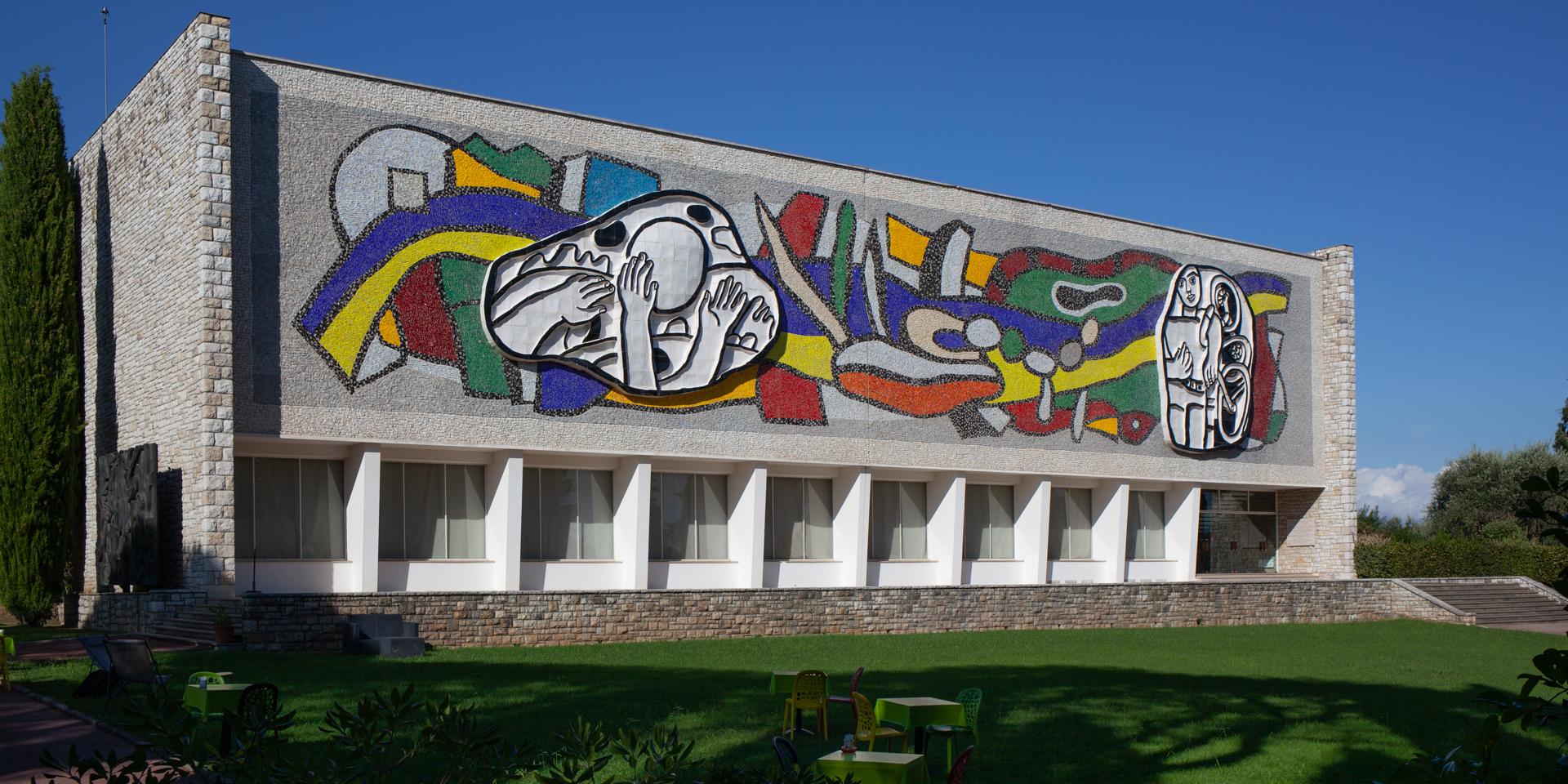Our missions
The three national museums of the 20th century in the Alpes-Maritimes, Marc Chagall in Nice, Fernand Léger in Biot and Pablo Picasso, La Guerre et la Paix in Vallauris, grouped together in a national department*, present an exceptional collection of works that allow visitors to discover three great artists of the 20th century, attracted by the light and artistic environment of the Côte d'Azur. Museums with a monographic vocation, constituted by donation to the State, they offer visitors privileged spaces for contemplation and knowledge of the works. The collections are regularly enriched by exhibitions highlighting the creative force and topicality of these three masters of modern art.
Missions of the national museums
As a service of national competence*, under the supervision of the Ministry of Culture, the mission of the National Museums of the 20th Century in the Alpes-Maritimes is to :
- to conserve, protect, restore on behalf of the State and present to the public the works of art in the collections listed in the inventory in its care
- to contribute to the enrichment of the national collections by acquiring cultural property on behalf of the State, whether in return for payment or free of charge
- to ensure the reception of the widest possible public, to develop the use of the collections, to promote knowledge of their collections, to conceive and implement educational and dissemination actions aimed at ensuring equal access to culture for all
- ensure the scientific study of its collections
- to contribute to education, training and research in the field of art history, archaeology and museography
- to preserve, manage and develop the buildings with which they are endowed.
To discover the Marc Chagall national museum, in Nice, click here
To discover the Pablo Picasso National Museum, La Guerre et la Paix, in Vallauris, click here
For more information on the national museums of France, click here
The collection of the Fernand Léger national Museum
From 1949 onwards, Fernand Léger stayed regularly in the village of Biot. At the age of 68, the painter began producing ceramic bas-reliefs in the studio of Roland and Claude Brice. In 1955, the year of his death, Léger acquired a piece of land below the village.
After his death on 17 August 1955, his widow Nadia Léger, together with Georges Bauquier, an assistant and close friend of the artist, decided to build a museum dedicated to his work. The architectural project includes several models of the artist which determine the scale of the building. A monumental fresco in polychrome mosaic adorns the main façade: originally designed for the Velodrome Stadium in Hanover (Germany), it includes two ceramic bas-reliefs.
The first stone was laid in 1957. On May 13th 1960, Gaëtan Picon, Director General of Arts and Letters, opened the Fernand Léger Museum. It was the first monographic museum in France to be installed in an architecture specially designed for the work of an artist. It is also the first museum created by a private initiative and operating with entirely private means.
In 1967, Nadia Léger and Georges Bauquier donated the building, the park and more than 300 works to the State. Through successive acquisitions, the Fernand Léger National Museum now holds over 450 works by the artist. Paintings, sculptures, drawings, films, theatre sets, tapestries, mosaics and ceramics constitute the only collection in the world entirely dedicated to the work of Fernand Léger.
The collection covers the entire career of Fernand Léger: from his neo-impressionist beginnings to his great compositions of the 1950s. The museum also holds decorative works, such as tapestries and stained glass windows (made from Léger's models when the building was extended in 1990), which complement the rich collection of paintings and ceramics.
The Fernand Léger National Museum bears witness to both the great diversity of the artist's work and his inclusion in the artistic trends of the 20th century. Since 2017, the programme of exhibitions has aimed to explore both the life and work of Léger, his artistic friendships, his aesthetic affinities with the artists of his time, but also his major influence on artists of the second half of the 20th and the beginning of the 20th century: as illustrated by the series of exhibitions Vis-à-Vis (2017, 2018, 2019) and more recently Gilbert & George. Images of Utopia (2020)
A contemporary cultural programme
Since the early 2000s, the National Museums of the 20th Century in the Alpes-Maritimes have placed contemporary creation at the heart of their artistic and cultural project, working on the points of encounter and extension between the three tutelary and emblematic figures of the artistic avant-garde, Marc Chagall (1887-1985), Fernand Léger (1881-1955) and Pablo Picasso (1881-1973), and artists of the 21st century.
Regular exhibitions have shown major artists on the international contemporary scene at the Fernand Léger National Museum, such as the visual artist John Armleder (2014), the painter Imi Knoebel (2017) and the photographer Stéphane Couturier (2018).
*Service à compétence nationale:
A service with national competence, or SCN, is a particular category of administrative service, which could be situated halfway between the central administration and the deconcentrated administration. It carries out operational missions throughout the national territory: management functions, technical or training studies, and activities for the production of goods or the provision of services. The SCN were established in 1997. Together with the central administrations and the deconcentrated services, the services with national competence constitute one of the three main modes of organisation of the State civil administration.
Caption: Main façade of the Fernand Léger national Museum, Biot. Architect: André Svetchine (1960). Photo: © Musées nationaux du XXe siècle des Alpes-Maritimes/Gilles Ehrentrant © ADAGP, Paris, 2023.

